Extract from The Guardian
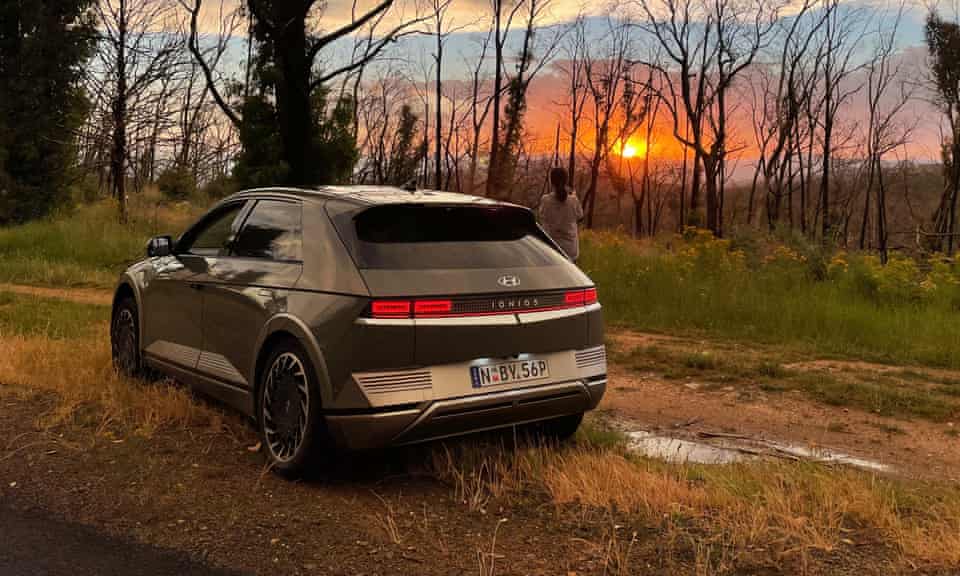
A trip from Sydney to Melbourne and back revealed a series of pleasures and pitfalls of Australia’s electrified open roads
Until recently, though, limited battery size and a lack of fast charging stations meant out-of-town excursions required careful planning.
State governments and fuel suppliers including Ampol have lately announced plans to greatly expand the network of charging sites across inland Australia. Most, though, will take time to build – possibly not fast enough to meet the surge in EVs on the road.
Over the recent Christmas period, I sought to test the EV facilities between our two biggest cities, Sydney and Melbourne, during peak driving season.
To do so, I borrowed the Ioniq 5, which Hyundai says boasts a range approaching 450km on a full charge, one of the longest in the market.
Over a week, my wife Yin and I toured the high country of the Snowy Mountains, drove around Melbourne and out to Geelong, before taking the coastal route home, revealing a few pleasures and pitfalls along the way.
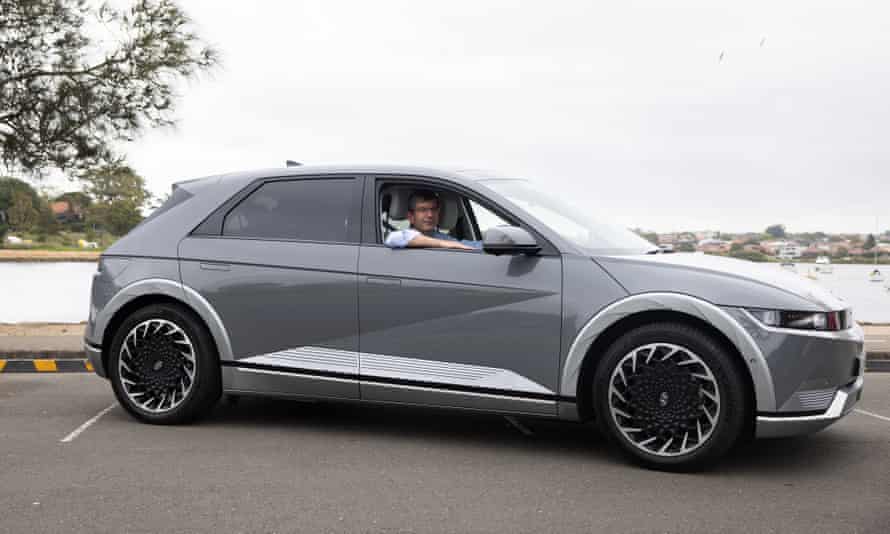
The first charge
We already own a small EV, which we charge overnight in the garage off the mains. Borrowing a bigger car with an unfamiliar plug and tapping public charging sites were novelties. As it turned out, a few others we met along almost 3,000km were novices too.
This would not be the last time we plugged in as people gassed up, and there will be more of this in years to come. Ampol, for instance, plans a $100m national network of “future energy” projects.
A veteran Tesla driver cheerfully helped us overcome the first challenge, downloading a necessary app, in this case for the Chargefox chargers.
Less fortunate, though, was a young couple from Canberra, venturing out with their two young children in their new MG, en route to the coastal town of Kiama.
“EV equals possible divorce,” the sheepish driver said, as he and his partner failed to download the app. With kids overheating the back seat, his frustrated partner declared defeat. “Let’s go back and get the fossil car.”
Driving uphill
Decent road trips, of course, require the odd detour off the highway. Skirting Canberra we powered on to Cooma, where we plugged into Snowy Hydro’s charger, presumably renewably sourced.
The final 10% of charging is typically a lot slower. Impatient, as the car’s computer was telling us 90%, we figured we’d have ample charge to reach Albury from there. We had a range of 342km and the border town where we planned to stay the night was only 319km away.
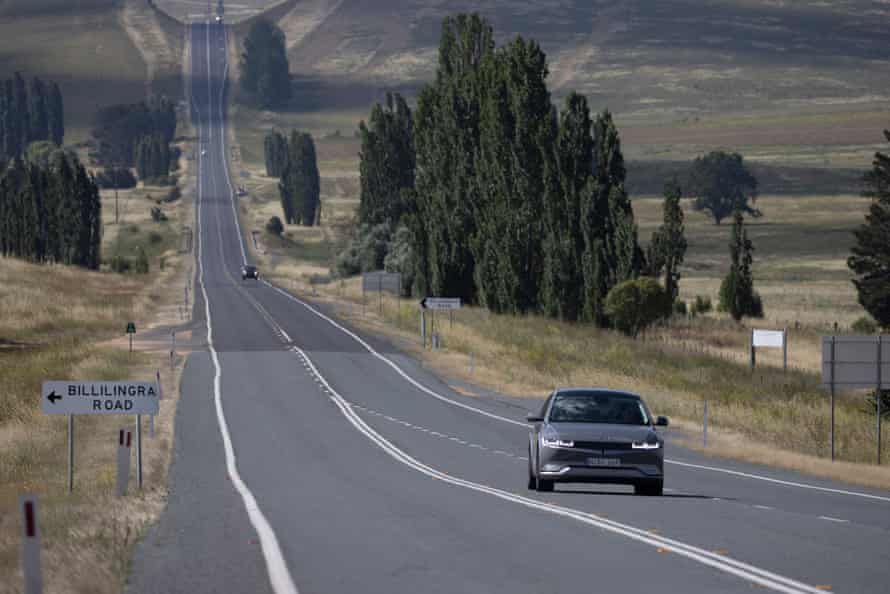
Some EVs account not only for distance but calculate conditions, such as changing elevation, to improve their predictions. Such capability would have been handy as we wound into the mountains, with no obvious charge points along the way.
With instant torque and low centre of gravity – thanks for those batteries – EVs offer a touring experience few petrol vehicles can match. Plus there is no engine noise.
Enjoyable though it may have been, we were still plugging up hills. To be safe, we drove with windows down and the AC off – except when summer thunderstorms rumbled over. We also cut speed to reduce the drag. Careful driving meant we outperformed the Ioniq’s estimate, and arrived in Albury with 79km to spare.
Clingy plugs and makeshift chargers
Among Albury’s allures was free charging, at least for those willing to wait in line at the top of a shopping centre carpark.
Apps such as PlugShare, ABRP and Evie help inform drivers of charging availability, and even allow for comments warning about damaged equipment.
We meet a couple in a Nissan Leaf, with a 200km range. They were slowly hopping their way to Sydney. During previous tours they had discovered to their concern that their car seemed to overheat if they charged and then tried to drive immediately, so they were getting to know well the cafes along the route.
A lack of mobile reception at one site meant we could not use our app, and had to ring the operator
Not every one of our charges went so smoothly. A lack of mobile reception at one site meant we could not use our app, and had to ring the operator to remotely release us from a plug that otherwise refused to let us go.
At an overnight stop in Mansfield, there was no charger. However, the motel we stayed at knew the drill, stringing out a 25m extension cord to give us additional juice. “A few people ask for it,” a staffer said.
Our final charge was at another big roadstop at Euroa. After that, we took the spectacular Maroondah Highway through the giant mountain ash forests, a road worth taking whatever your means of mobility.
Melbourne, as you might imagine, has lots of charging options. But even then nothing is foolproof. A visit to the RACV headquarters in the CBD turned out to be a dud: Covid restricted charging to members only. (Memo: keep checking the apps.)
Staying in the Bayside region in the city’s south-east, we made use of the local council’s charging bays on three occasions.
Risking a coastal route
Most Melbourne-Sydney road journeys follow the Hume’s north-south trunk but the more scenic – and challenging for EVs – path is the coastal one.
Until
there are more chargers, few EV drivers will take the risk. But without
the demand, not many private operators will set up shop without
government support.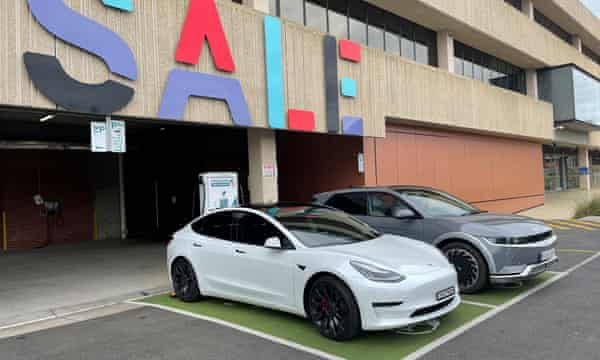
The 1,000-plus kilometre route is popular for drivers with more time on their hands, in part because of the region’s beauty but also the less crowded beaches and forests.
Heading eastwards into Gippsland was straightforward, until you hit Sale. This was a crucial destination, not just for our journey. During our wait to charge, a busy line-up of vehicles gathered nearby.
Luckily, the Port of Sale location comes with a cafe and gallery to fill any down time, and there are river cruise options too, if the wait is a really long one.
For those continuing on to NSW, a “long hop” awaits, as one driver, Tom, describes it. He normally wouldn’t charge his Tesla beyond 96% because it reduces battery performance over time. But, for this trip, Tom makes an exception and advises us to do so too. We take the 23 minutes extra to go from 90% to 100%.
Range anxiety
As we had been driving conservatively, our Ioniq reckons we have a 480km range departing Sale. Our destination, Bega, is 395km away – so we exit with confidence.
However, this estimate doesn’t take into account windy roads, even if there are few steep climbs. We watch with growing intent as the battery buffer steadily shrinks.
With
about 130km to go, and the sun setting as we near the NSW border, the
car starts to guess we might have a problem reaching our nearest charge
point.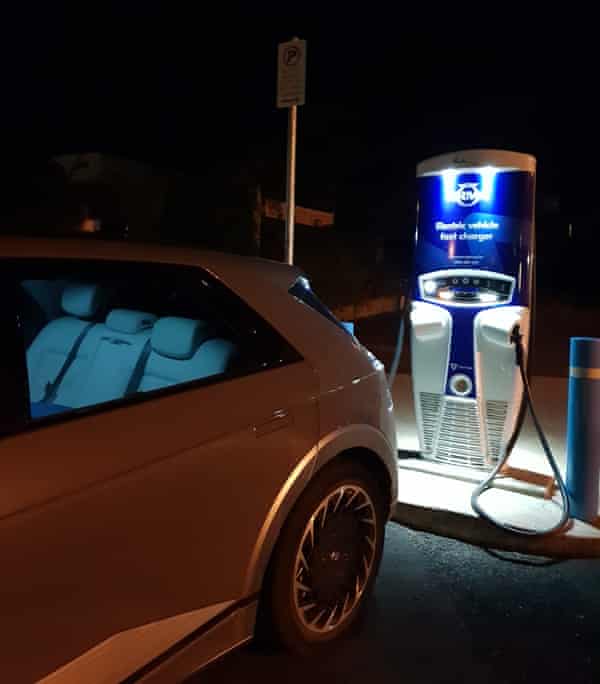
We ease back on the pedal, trimming speed to 90km/h in 100km/h zones. Our ETA blows out by half an hour. With 40km to go, and about 10% charge, the car’s screens start to warn us to search for alternative recharging. This is what “range anxiety” looks like.
We slow down further going up hills, and roll down the other side in a bid to recapture any extra charge we can from the regenerative brakes. We’re conscious that Bega sits on a plateau, so the last section will involve climbing.
Thankfully it’s evening and we don’t need air-conditioning, but we start to wonder whether saving on lights might make a difference. Half in jest, we ponder how many more metres our phone batteries might offer.
Cars bank up behind as they await the chance to overtake us.
We’d heard carmakers build in some reserve at zero, much as combustion engines can run on “empty” for a while. With 1.6km to go to the charge point, and only 5km range remaining, if something goes wrong, we’ll have to find out if the Hyundai has hidden watts.
Fortunately, we locate the charger without fuss, and find Tesla Tom from Sale topping up. Some rowdy locals declare us a “captive audience” so we bolt with a 14% charge, vowing to return in daylight. Charging points are often in poorly lit parts of town, we found.
Free riding back to Sydney
At 7am, Bega’s streets are clear, as is the charging bay. At 80% capacity, the battery generously tells us we have a range of 354km, not far shy of the 460km we’d need to make it all the way back to Sydney, with detours.
From now on, though, there are many more refill options. We make the most of free electricity by NRMA, recharging at the three “Bs” – Bega, Batemans Bay and Berry. The whole return leg doesn’t cost us a thing.
Just about 9.30pm, we park outside our Sydney home. The odometer’s clocked our journey at 2,861km.
Since our drive, NSW has released plans to build 1,000 charging stations over the next four years. An indicative map suggests at least the south-east town of Eden will get a charger, shortening the “long hop”.
Victoria, too, is stepping up its $100m Zero Emissions Vehicle Roadmap aimed at building on the 116 sites already supported by the state’s government.
Those sites, and many others, could come in a rush, particularly if hotels and other resorts see EV charging a magnet. They might need to if they are meet the huge increase in such vehicles in coming years and the expectations of their cashed-up owners.
No comments:
Post a Comment